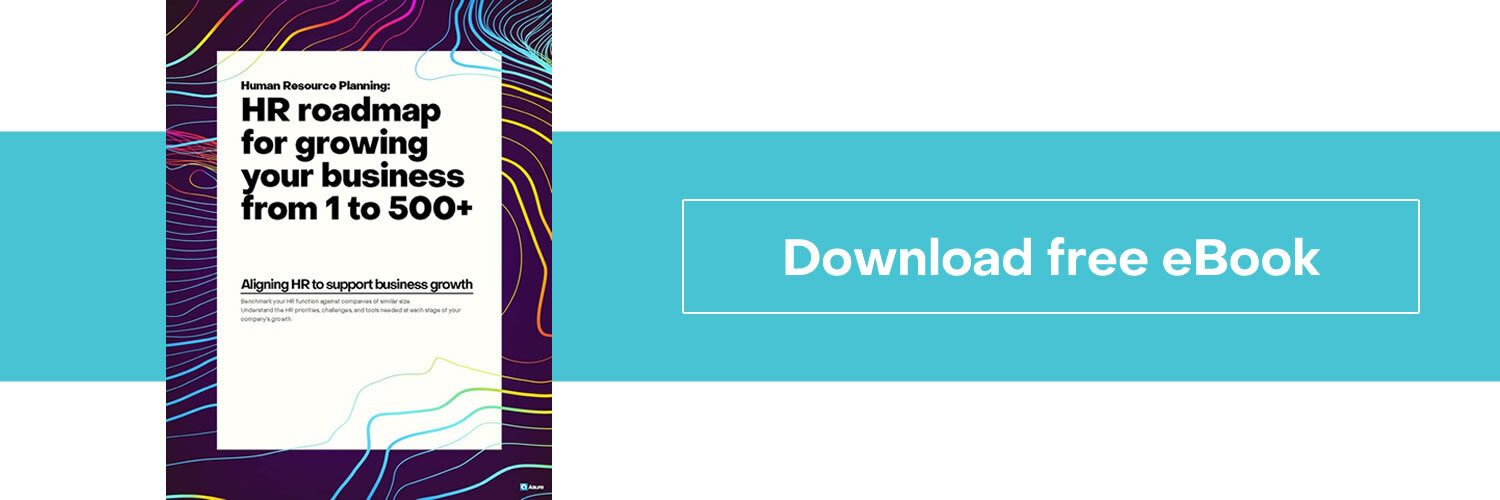Whether you’re an entrepreneur or a business leader, it’s important to be ready to grow your workforce and fill the need for talent. That’s why more growing businesses take time to develop a formalized staffing plan to ensure the right people with the right skills are in place to meet business goals and objectives. Staff planning is about more than just finding people to fill each role within your business. A solid staffing plan goes beyond headcount to help businesses define job needs, identify skills gaps and market trends, and build contingency plans.
Creating an effective staffing model helps combat some of the top business concerns in today’s environment. According to a recent Mercer report, 52% of high-growth companies said one of the greatest risks to their workforce was the excessive time it takes to fill open positions. High-growth businesses know it’s important to keep pace with the speed of change. The Mercer report recommends that businesses take a “long-term view of people needs to inform short-term decisions… These may include moving people to business areas with greater return, experimenting with new technology, moving an office closer to vital talent pools, or investing in non-traditional talent by creating new pathways into skilled jobs.” Businesses can do this successfully by first developing a staffing plan.
Let’s examine what it takes to develop a staffing plan and why high-growth businesses like yours are using them to meet changing talent needs, business goals, and market trends as well as better inform their hiring plan.
What is a staffing plan
Staff planning involves a series of steps taken by a business to ensure that two important items have been determined: 1) the exact number of roles within the business and 2) workers with the right skills are filling these positions. This staffing plan template helps inform future workforce decisions related to recruitment, development, and funding. A solid staffing plan can also “provide for contingencies such as periods of low and high volumes of work.” A well-designed staffing plan brings control to your sometimes unpredictable workforce needs and emboldens your business to prioritize skills and qualifications over headcount. It allows you to analyze and respond to gaps in your workforce and better understand why that need exists whether it’s due to growth, changing market trends, or staff turnover. When developing your staffing model, Robert Half recommends starting with these questions:
-
What type of workers and skills are needed?
-
How will you acquire staff?
-
How long will the staff be needed?
-
Will the staff need training and how will it be done?
-
What budget is available?
-
When do you need the staff?
Six steps to develop an effective staffing plan
As a business leader, you are ultimately trying to build the best team to drive business success. Here are some important steps to develop a staffing plan that helps your business meet its goals and growth objectives:
-
Determine job requirements. Every staffing plan must start with the basics. Human resources professionals recommend that each business (or department for a larger organization) begin by defining roles and writing detailed job descriptions for every employee. The information should include the role that employees are currently filling as well as your expectations for the future. You should include education, work experience, and any professional certifications or licenses that are needed for each role. This process helps define future staffing needs including new positions, skills gaps, and advancement opportunities.
-
Evaluate demand. Call it a demand forecast. This is an excellent time to review your overall workforce including how many positions you have and how many are needed. Take an inventory of the knowledge and skills your employees have (skills that you can possibly tap into as the business grows), what they don’t have, and which jobs are at risk for skill loss due to business or technological changes. Examine your workforce turnover trends to learn the root cause—low employee engagement, better job offers, or retirement.
-
Assess supply. It’s also important to review talent supply and any factors impacting the availability of both internal and external hires. Does your business have employees that are ready for promotion or need training to get to the next level? Take a look at your external labor pool as well to understand market trends in your area as well as statistics on unemployment rates and labor costs in other regions. Determine what it will take for your business to attract external talent, especially skilled labor that is in high demand.
-
Perform a gap analysis. A gap analysis involves comparing your current situation with what you need. The difference makes up the talent gap that you need to fill. Can you fill gaps with training and development? Or are gaps due to heavy workloads during high seasonal demand periods? Develop contingency plans that can adapt as demand changes and supports long-term growth.
-
Identify strategies. To strengthen your labor supply, focus on strengthening your recruitment and retention strategies. A strong employer brand and company culture is important to effectively attract and retain talent. Align your culture with business strategy by redesigning work processes, managing employee performance, providing workforce development and training programs, and making investments in employee happiness and wellbeing.
-
Regularly evaluate your staffing plan. Business conditions are constantly changing, which means your workforce needs are changing too. Review your staffing plan on a regular basis to ensure you’re effectively meeting evolving needs and goals. Staffing plans are not just about hiring, so be sure to secure the necessary leadership, budgeting, and communication resources needed to ensure success.
Get help with HR needs and strategy
Bring in fully certified HR professionals to help your business meet its immediate and long-term hiring and strategy development needs. Or consider an outsourced HR process to get a higher level of support so you can focus on growing your business.

